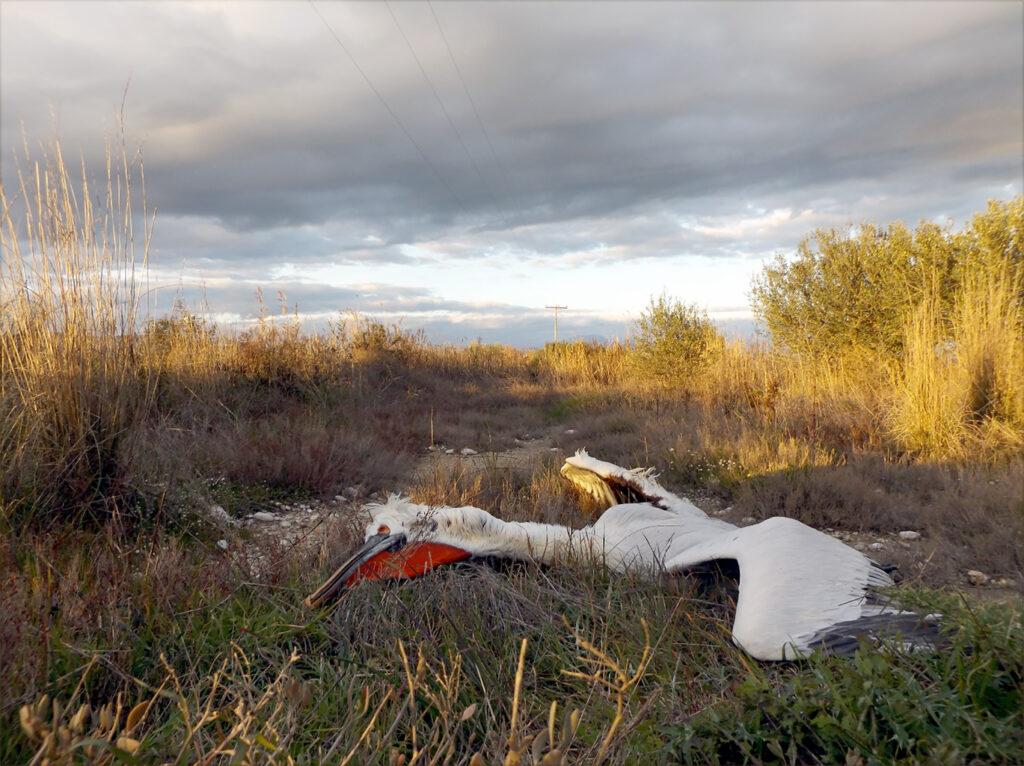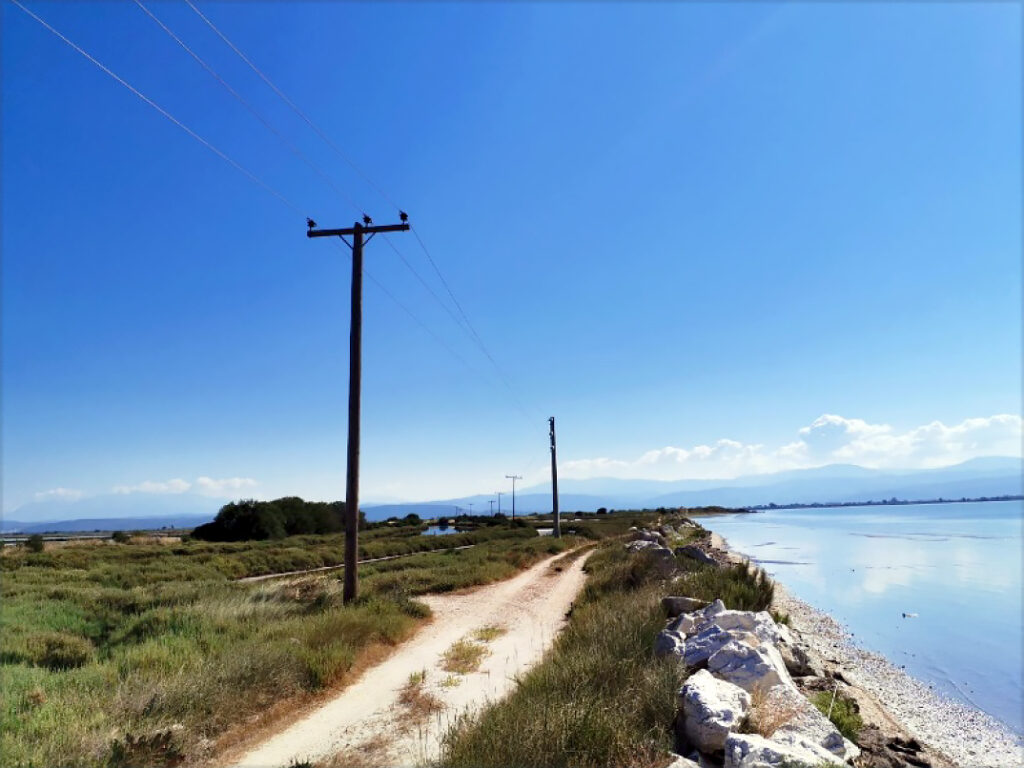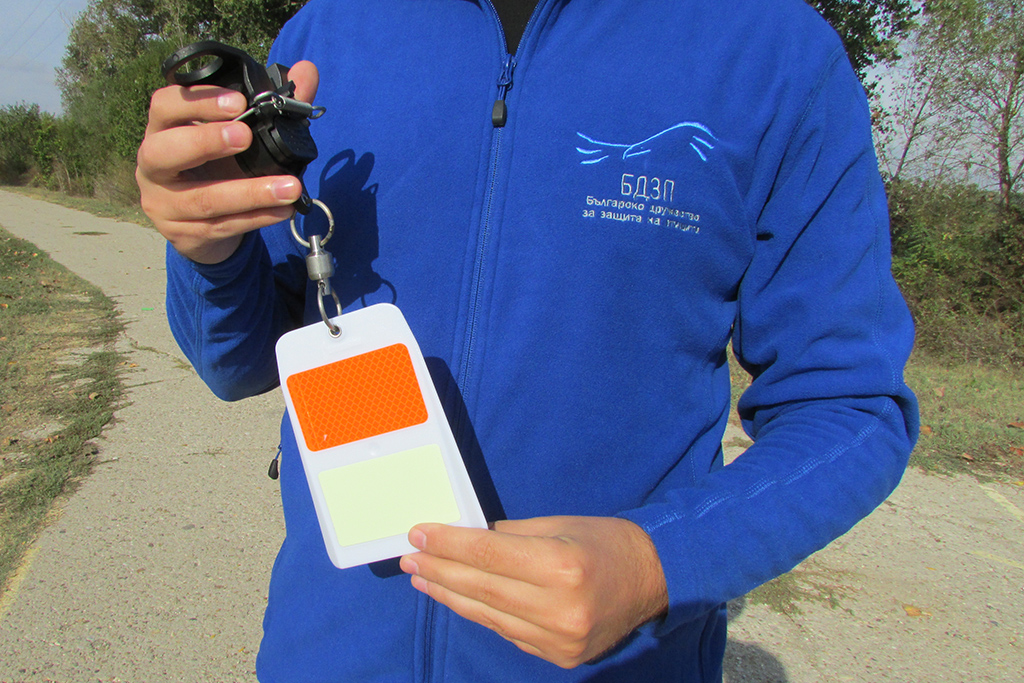The team of the Hellenic Ornithological Society (HOS) recently assessed the powerlines at selected points within the Messolonghi Lagoon and Amvrakikos Wetlands National Parks to find out which of them are dangerous for Dalmatian pelicans. 50% of the investigated powerlines appeared to be risky for birds.

In some places, near the feeding and roosting grounds, power lines cause serious problems to the birds, especially so big and poorly maneuverable as pelicans. The birds simply don’t see the wires, especially at night time, and can crash into them resulting in injury or even death. According to the International Single Species Action Plan for the Dalmatian pelican (Pelecanus crispus), death by collision on overhead electrical wires is an important threat to the species. Thus, the first Dalmatian pelican tagged with a satellite transmitter in Bulgaria died because of the collision with the overhead powerline in Greece. Immediate mitigation measures are required to protect the birds from this risk.
Bird diverters, which make the power lines visible to birds, are quite an effective solution to the problem. They have been effectively used for a few decades by power supply companies in order to mitigate bird collision casualties. A number of diverter models are available on the market.

Within the framework of the Pelican Way of LIFE initiative for the conservation of the Dalmatian pelican, the HOS experts evaluated the power lines in the selected parts of the electricity network within the National Parks and Special Protected Areas (SPA) of Amvrakikos wetlands and Messolonghi lagoon, where birds collision casualties have been found in the past. These particular areas were chosen as they host important Dalmatian pelican colonies of the western subpopulation. Due to its small size, this sub-population of the species is considered to be very vulnerable.
“The team monitored 14.7 km of medium voltage network from which 7.4 km were concluded to be dangerous for Dalmatian pelicans. We recommend installing the diverters here as soon as possible. The yearly estimate of Dalmatian pelican casualties is at least 4% of the local population in the areas that were monitored. We also recommend monitoring the additional areas within the Special Protected Areas” told Manolia Vougioukalou, the head of HOS.

Withing the Pelican Way of LIFE initiative we aim to reduce the risk of collision for pelicans at key sites, including the Burgas Wetlands (Bulgaria), Danube Delta (Romania), Messolonghi, and Amvrakikos (Greece), by installing bird diverters on at least 10 kilometers of power lines. This action will take place in cooperation with utility companies in Romania, Bulgaria, and Greece.
Greece hosts around a third of the global population of Dalmatian pelican in six breeding colonies (Prespa, Chimaditis, Amvrakikos, Messolonghi, Kerkini, and Karla). Small Prespa Lake hosts the largest colony in the world, with around 1200 breeding pairs. Though this year this and other colonies were strongly affected by the bird flu, resulting in an almost 40% decline in the local species population. In Greece, the Dalmatian Pelican is a local resident and partial migrant. It breeds regularly in Prespa and the Amvrakikos Gulf, while the species has started to form breeding colonies in the Messolonghi Wetlands and in Lake Chimaditis. Some pelicans are wintering individuals in these project sites.